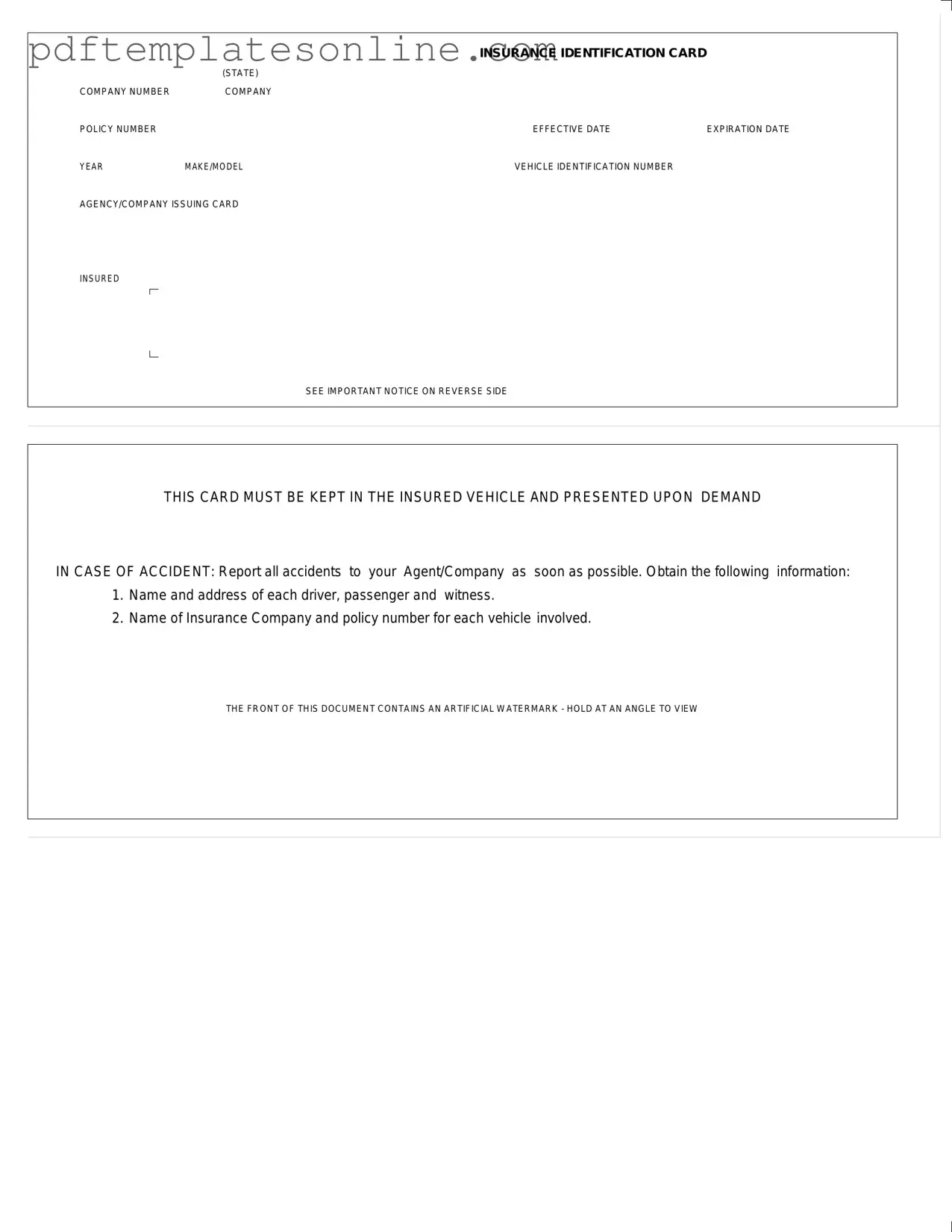Filling out an Auto Insurance Card form may seem straightforward, but many people make common mistakes that can lead to complications down the line. One frequent error is neglecting to include the company policy number. This number is crucial because it helps identify your specific coverage. Without it, your insurance provider may struggle to assist you in case of an accident.
Another mistake often seen is failing to write down the effective and expiration dates correctly. These dates indicate when your coverage starts and ends. If they are inaccurate, you might find yourself in a situation where you think you’re covered, but your insurance has actually lapsed. Always double-check these dates before submitting your form.
People also frequently overlook the vehicle identification number (VIN). This unique code is essential for identifying your vehicle. If it's missing or incorrect, it could create problems when you need to file a claim. Make sure to locate the VIN on your vehicle and enter it accurately.
Another common pitfall is not including the make and model of the vehicle. This information is vital for your insurance company to assess the risk associated with insuring your car. If this detail is omitted, your policy might not be valid, leading to potential issues if you need to file a claim.
Additionally, many individuals forget to check the agency or company issuing the card. This detail is important because it confirms who your insurance provider is. If there’s any confusion about your coverage, having this information clearly stated can save time and frustration.
Lastly, some people neglect to read the important notice on the reverse side of the card. This section contains critical information about what to do in case of an accident. Ignoring it could leave you unprepared during a stressful situation. Always take a moment to read through all the information provided to ensure you understand your responsibilities and rights.
